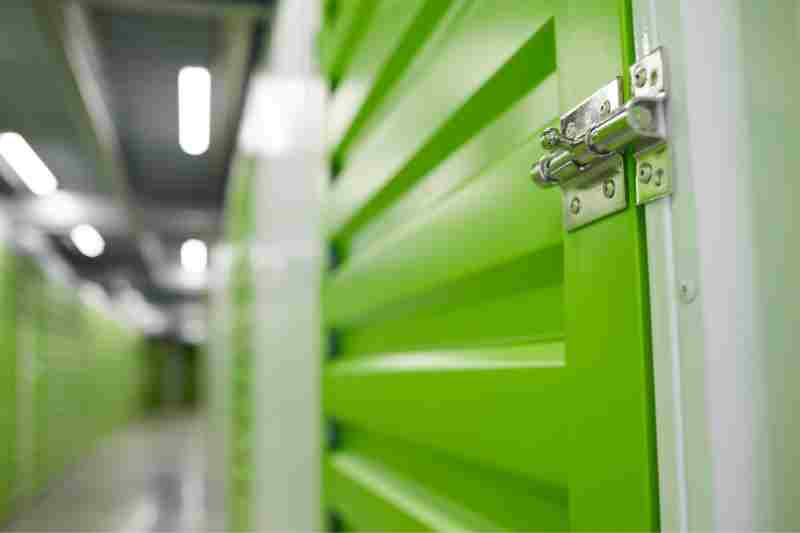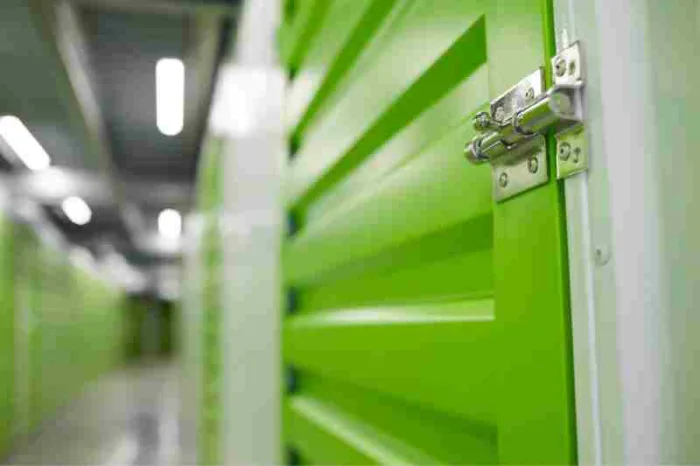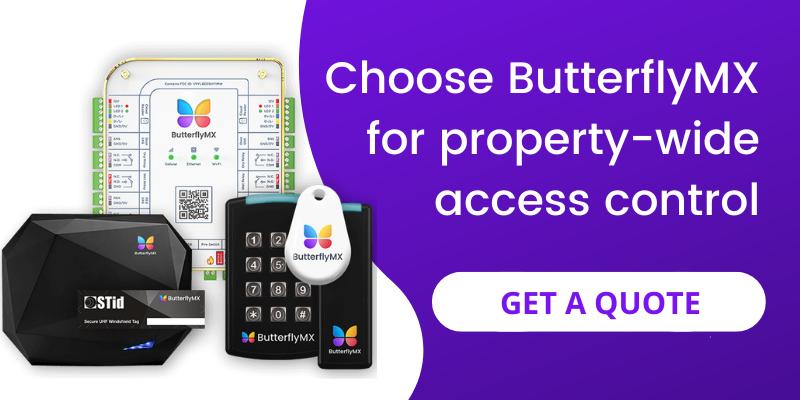Key takeaways
- A self-storage access control system is a device that allows unit owners to remotely control access to property entrances such as gates and doors.
- To find the best access control system for your property, you’ll need to consider use cases such as front gate access, visitor management, and storage unit access.
- Advantages of access control for self-storage include security, convenience, and remote access.

The self-storage industry is continually expanding. As a result, facility owners face the unique challenge of implementing security measures while providing convenient access to their tenants. Self-storage intercom systems are an effective solution that can be pivotal in striking this delicate balance.
Furthermore, choosing the right self-storage access control system can positively impact customer experience and the reputation of your business. Below, we go over the ins and outs of self-storage access and how to choose a system
In this post, discover:
- What is an access control system for self-storage?
- What is the best self-storage access control system?
- How do I choose the right access control system?
- What are the advantages of self-storage access control?
What is an access control system for self-storage?
A self-storage access control system allows unit owners to remotely control access to property entrances such as gates and doors. Typically, high-tech access control systems empower users to use their smartphones as a touchless option for entry. However, many other elements make up a cohesive access control system.
For instance, you’ll likely see these common features:
- Keypads and card readers. For some, keeping a PIN or keycard on their person feels more reliable. A gated access system with a keypad or card reader affords efficiency and security.
- Vehicle readers. To avoid credentials, vehicle readers can be installed at facility gates to help with traffic flow. These readers scan a windshield tag on the authorized user’s vehicle that automatically opens the gate as they approach and closes it immediately.
- Video intercoms. Video intercoms are perfect solutions for entrance permissions. They make it simple for visitors to request access via a two-way call. And property managers no longer need to be on the premises to monitor who is coming and going.
What is the best self-storage access control system?
ButterflyMX’s access control system simplifies access and adds convenience to everyday operations. In fact, with ButterflyMX, you can easily streamline access and reduce frustration with video calling and smartphone app functions.
ButterflyMX products perfect for self-storage facilities include:
Vehicle access control
With the ButterflyMX vehicle access control system, you can streamline gated vehicle access. The system for your self-storage gate helps customers enter the gated area without stopping and input a code, like most self-storage gates.
Additionally, the ButterflyMX vehicle access control system empowers customers to enter the property faster, thus reducing traffic build-up at the gate.
With the vehicle access control system, entry to your self-storage facility is simplified into two steps:
- First, each customer places a windshield tag on their vehicle.
- Second, they’re automatically granted access each time they approach the gate.
Video intercom
The ButterflyMX video intercom system is the most popular video intercom on the market. With this video intercom for self-storage, you can remotely view a date- and time-stamped photo of entry events from the dashboard. Moreover, staff and customers can easily provide Visitor Passes to trusted guests.
Additionally, video intercoms make it easy for customers to communicate two-way remotely with staff from anywhere in the world.
Furthermore, the ButterflyMX video intercom is perfect for retrofitting because it doesn’t require in-unit hardware or wiring. This saves you time and money.
Discover how to use gated entry access control systems with your smartphone:
Keypads and card readers
ButterflyMX keypads and card/fob readers are perfect for secondary entrances to storage buildings or individual storage units. This allows customers to opt out of carrying their keys or fobs whenever they want to access their unit.
Customers using keypads create their PIN or use the ButterflyMX app to access the locked area. If your customers prefer key fobs, you can install ButterflyMX mullion or single-gang readers at entry points.
Front desk station
Many self-storage companies don’t employ a large number of front desk staff. And the reason is that with self-storage, customers generally don’t need or desire to enter the front office. However, having a front desk area is still important for those who do need to speak with a staff member.
If you find keeping enough staff members on the premises difficult, the front desk station might be for you.
Front desk station software is easy to install on any desktop computer already used at the office. What makes it different is how property managers can use it to remotely communicate with visitors if they can’t make it to the office. Moreover, when the front desk station is paired with the full suite of ButterflyMX products, it’s easier to remotely check in visitors, communicate with customers using two-way video, and monitor entry and exit events from anywhere.
What kind of access control system can be installed for electric gates?
The ButterflyMX access control system is perfect for installation on electric gates. It does not require wired installation, making it the best choice for electric self-storage gate systems.
How do I choose the right access control system?
Consider factors such as security needs and use cases to find the best access control system for your property.
Use cases for an access control system for self-storage facilities:
- Front gate access. Just about all public storage facilities have some form of gated entry system. Self-storage gate access systems such as a vehicle reader or keypad will make entrance easier for customers and staff.
- Visitor management. Granting temporary access to visitors such as service providers is simple with an access control system. For example, you can grant access via the video intercom system or provide them with a temporary PIN.
- Storage unit access. Individual buildings and units usually require a physical key or key fob. With a keypad access control system, you can simplify the process and eliminate the need for physical credentials. And if your customers prefer physical credentials, the best keypads also accept physical credentials like key cards and fobs.
What are the advantages of self-storage access control?
Here are the top three benefits of self-storage access control:
1. Security
Access control is a form of physical security that deters intruders from breaking into your self-storage facility. Moreover, the best ACS also creates a digital trail of customers in its database for property managers to access.
For example, state-of-the-art access control features a photo audit trail that takes time- and date-stamped photos of entry events.
This way, managers and staff can quickly view the time-stamped self-storage security logs to verify who has entered the premises, at what time, and for how long.
2. Convenience
With an access control system for public storage, customers can easily enter your facility, and managers can control property access without a hassle.
Investing in an intercom at your self-storage property:
- Eliminates the struggle of tracking physical keys.
- Empowers customers and staff to control property access via a smartphone app.
- Makes it easier for customers and staff to grant access to service workers and guests.
- Gives managers and owners more control over customer access permissions.
3. Remote access
Property managers can easily monitor customers from anywhere worldwide using an access control member dashboard.
Furthermore, they can create new profiles, add or delete permissions, and grant temporary PINs without being onsite.







